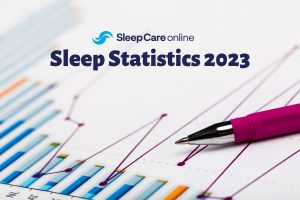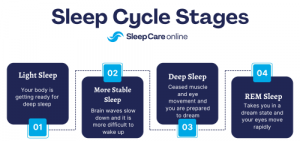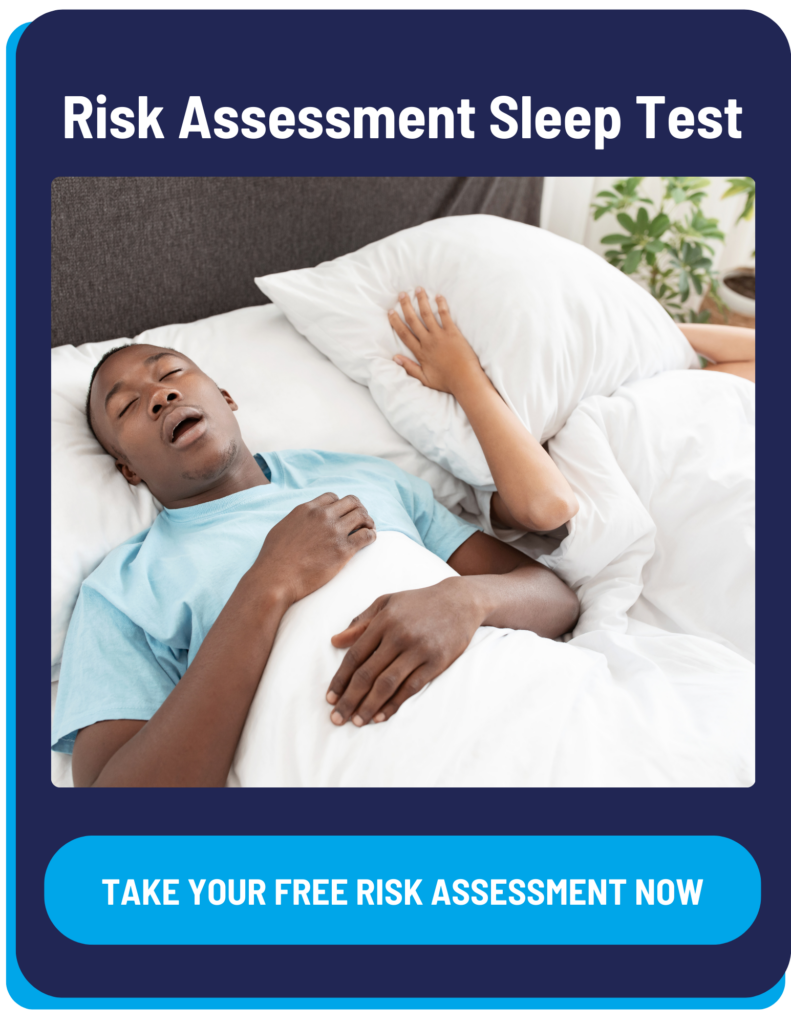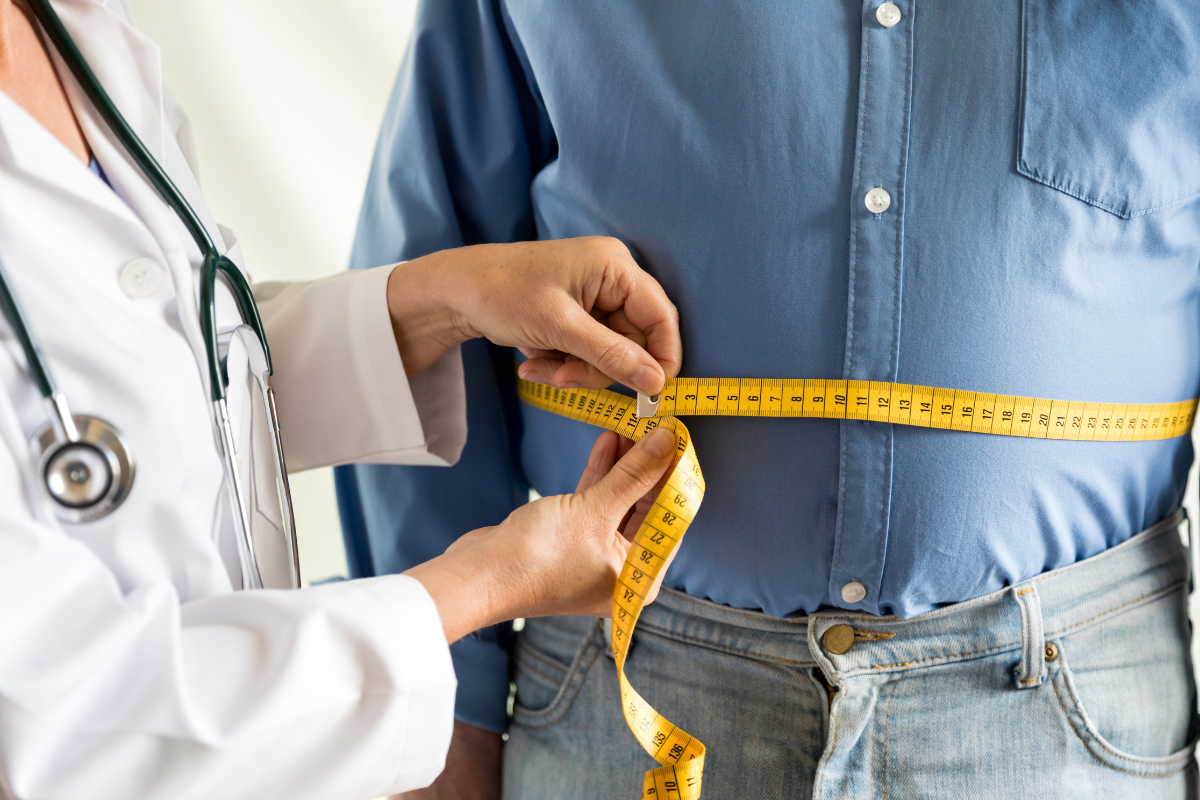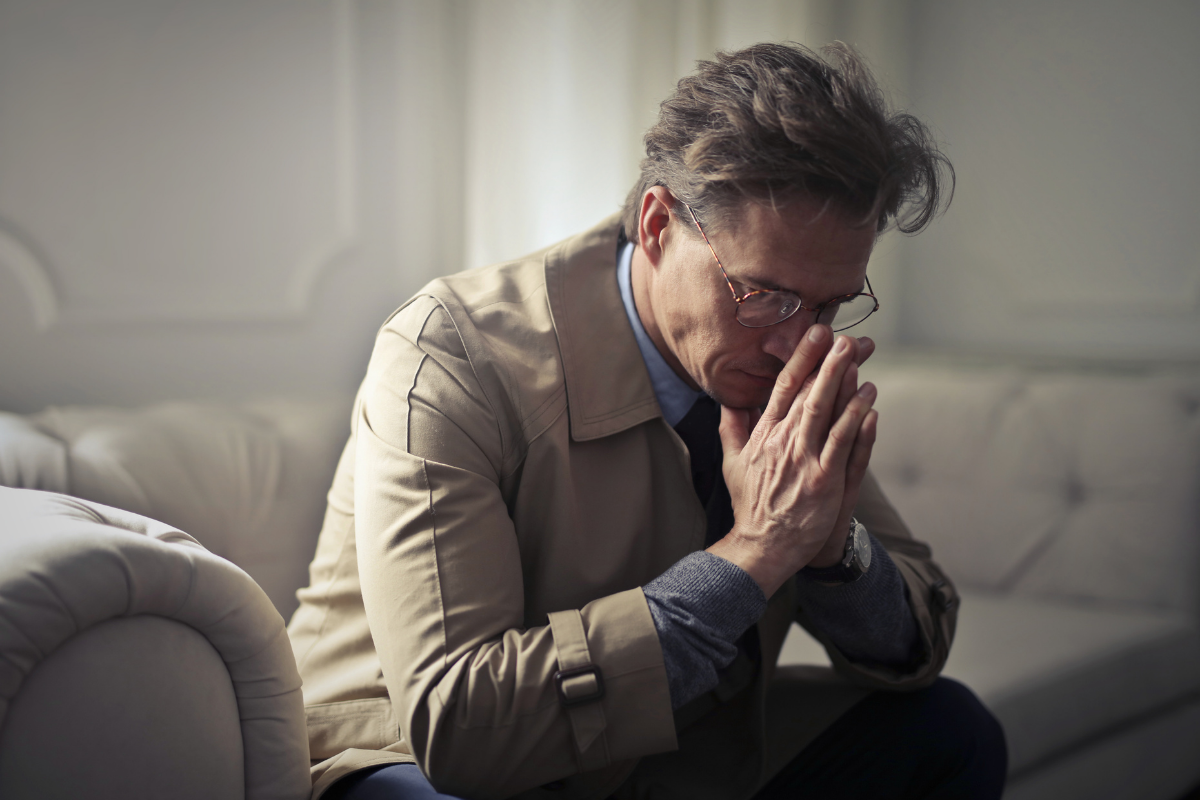Sleep research is constantly being updated. Know more about healthy sleep and how to combat sleep disorders with the latest sleep statistics for 2023.
Understanding Sleep Cycles
The different stages of sleep are important to understand for sleep health. An individual goes through four to six sleep cycles during a typical sleep session. You can divide your sleep experience into two major phases, however: non-REM sleep and REM sleep.
There are three stages of non-REM (rapid eye movement) sleep as your body prepares for relaxation.
Stage 1: You are still likely to wake from this light sleep stage. It is during this stage that you may feel muscle contractions as your body loosens up for deeper sleep.
Stage 2: At this stage your eye movements cease, and your brain waves slow down. During this stage, it becomes more difficult to wake up.
Stage 3. The final stage of non-REM sleep includes ceased muscle movement and eye movement. At this point, your body is prepared to start dreaming.
REM sleep is characterized by shallow breathing and physical immobility. REM sleep takes us into a dream state in which our eyes move rapidly. This is the deepest state of sleep. Rapid eye movement sleep makes up 20% to 25% of total sleep in healthy adults.1. Not only is this our dreaming state but also when our bodies and brains begin to repair and revitalize from the day’s activities. REM sleep is essential for preparing us for the next day.
Amount Of Sleep Needed by Age
How much sleep you need changes with age. So, your sleep health becomes an ever-changing pattern as you get older. Newborns require between 14 and 17 hours of sleep. That number drops as we get older. Teenagers are often accused of being lazy because of their sleep needs, but they still require up to ten hours of sleep for their age.
Most older adults require seven to eight hours of sleep.2 This is usually a leveling-off point in our lifetimes that stays consistent into our senior years. While sleep needs depend entirely on the individual, you can compare sleep guidelines by age to get a good idea of how much sleep is healthy from newborn to senior. Learn more about sleep guidelines.
Bedtime Routine That Impacts Your Sleep
How you sleep can also affect your sleep health. Your bedtime routine plays an important role in whether you wake up groggy or rested.
What makes a good bedtime routine?
- Consistent sleep schedules to bed at about the same time every night.
- Turn off your electronics-they can keep you stimulated and awake. Adults in the U.S. spend 3 hours, and 30 minutes on social media before bed every night.3 This behavior can affect how well you sleep even after you sign off.
- No alcohol-nightcaps are not good for sleep. In fact, they can keep you out of deep sleep.
Learn more ways to maintain a healthy bedtime routine.
Sleep Disorders
Between 50 million and 70 million people are thought to suffer from persistent sleep difficulties. The most prevalent ones are narcolepsy, sleep apnea, and insomnia.4 The impact of sleep disorders is not only personal but economic. Sleep disorders are estimated to cost the healthcare industry $94.9 billion a year.5
It is often an unwillingness by individuals to accept a sleep disorder as a problem that leads to a worsening healthcare crisis. Many people dismiss sleep deprivation as a part of their lifestyle or personal sleep habits, not knowing the toll it is taking on their health.
Sleep Apnea Statistics from 2023
Sleep apnea is a sleep disorder that causes interrupted breathing while asleep. These periodic interruptions not only lead to sleep deprivation but also health issues related to sleep loss. There are two types of sleep apnea.
Central Sleep Apnea
Central sleep apnea originates in the brain. The brain is unable to send proper signals to the muscles that control breathing. Intermittent misfired signals lead to disruptive breathing throughout the night.
Obstructive Sleep Apnea
The more common obstructive sleep apnea is caused by the relaxation of throat muscles during sleep. When throat muscles fall closed, the airway becomes temporarily shut causing disrupted breathing. Much like central sleep apnea, these events occur frequently throughout the night.
How Many People Have Sleep Apnea?
Approximately 39 million U.S. adults have obstructive sleep apnea.
There are approximately 170 million people in both the Americas with sleep apnea.
It is estimated that at least 936 million people have OSA globally.6
Learn more about sleep apnea.
How Common Is Insomnia?
Chronic sleep loss or insomnia is one of the most common sleep disorders affecting 1 in 3 adults worldwide. Insomnia often becomes a vicious cycle of sleep lost at night that is made up during the day, which leads to more lost sleep at night.
How Common Is Narcolepsy?
Narcolepsy is a sleep condition that causes sudden and uncontrolled bouts of sleeping. These sleep events can occur during the day even when the individual is wide awake. Narcolepsy affects 1 in every 2000 people.
Sleep Disorder Treatments
Sleep disorder treatments always begin with an accurate diagnosis. Once doctors understand the type and severity of a sleep disorder they can begin proper treatment.
Changing sleep behaviors is often one of the easiest ways to manage a sleep disorder. Using consistent bedtimes and following strict bedtime rituals can help many people keep their sleep disorders under control.
For others, medications may be necessary to help encourage healthy sleep. For more common sleep disorders like sleep apnea, CPAP therapy can help manage symptoms and promote uninterrupted sleep.
Conclusion
New research is always emerging on healthy sleep, sleep disorders, and sleep disorder treatment. If you feel you have a sleep disorder, it is important to get tested right away. Sleep Care Online is a simple, safe, and affordable way to get tested for sleep disorders from the comfort of your home. Don’t let poor sleep become a health problem. Do your homework and find a solution that gives you a good night’s sleep.
References
- Suni, Eric, Truong, Kimberly 100+ Sleep Statistics. Sleepfoundation.org. September 26, 2023.
- Markwald R, Melanson E, Smith M, et al. Impact of insufficient sleep on total daily energy expenditure, food intake, and weight gain. Proc Natl Acad Sci U S A. 2013 Apr 2;110(14):5696-5700.
- Suni, Eric, Truong, Kimberly 100+ Sleep Statistics. Sleepfoundation.org. September 26, 2023.
- Suni, Eric, Truong, Kimberly 100+ Sleep Statistics. Sleepfoundation.org. September 26, 2023.
- Mass General Bringham. Sleep Disorders Tally $94.9 Billion in Health Care Costs Each Year. May 7, 2021
- Sleep Review. Sleep Apnea More Common in Americas than Previously Thought. Jun 18, 2019.

